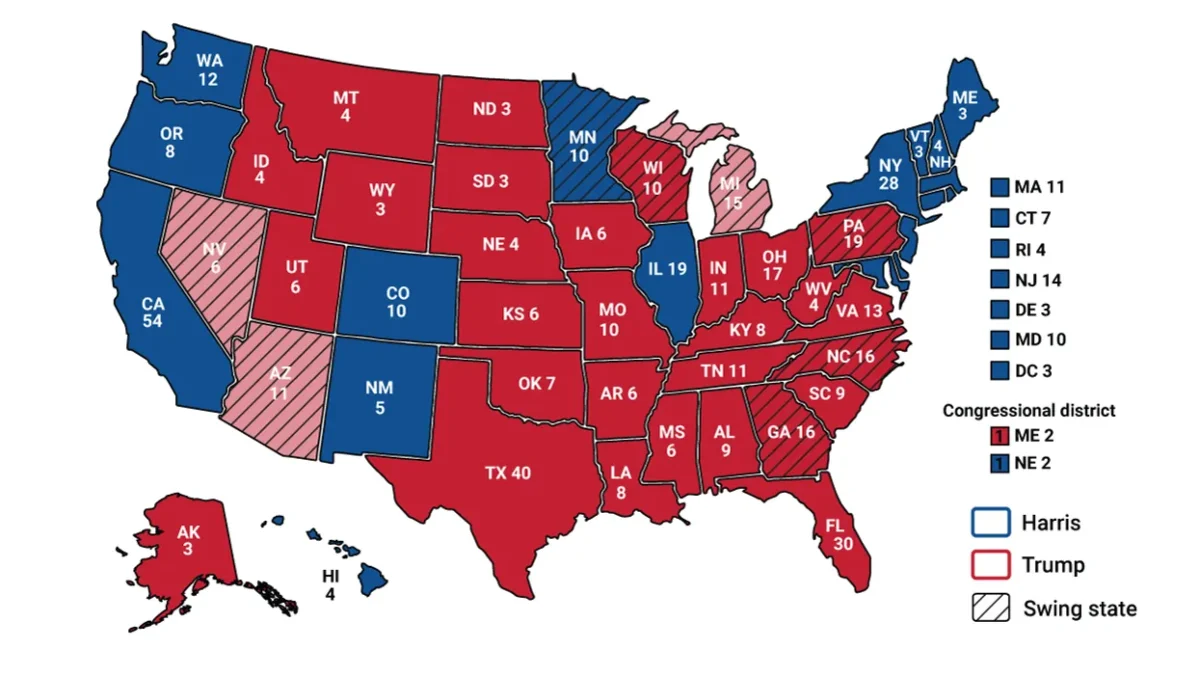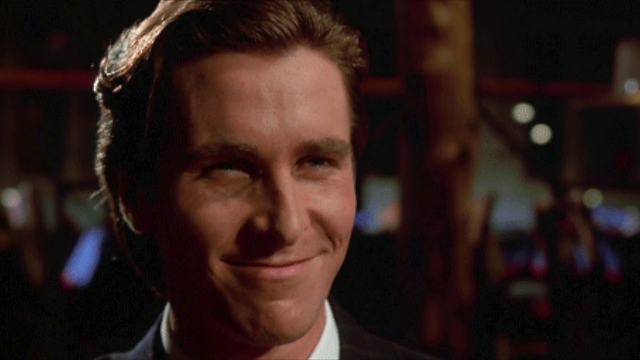If you spend much time online, you might have recently come across “sigma male” edits, in which a video or quote is edited together with a clip of a character whom teenage boys are likely to idolize, most commonly Patrick Bateman from the movie “American Psycho.” Scenes of these characters are then taken out of context to show them expressing their approval or disapproval of the actions or words shown. Seeing so many references to “American Psycho” in my feed, I decided to watch it for myself.
“American Psycho,” released in 2000 and based on the popular novel by Bret Easton Ellis, follows the life of Patrick Bateman, played by actor Christian Bale. By day, Bateman is a pretentious investment banker. He is a “yuppie” (short for young urban professional) often resented for flaunting his success through his expensive purchases and lifestyle. By night, he appears to be a gruesome serial killer.
Bateman is a stereotype of the shallow nature of fresh college graduates trying to climb the corporate ladder, with a little bit of murder sprinkled in. The fact that he tries his hardest to conform with his peers is central to his character: Several important plot developments are caused because he is indistinguishable from his other, high-achieving co-workers.
Right off the bat, what jumps out most to the watchers is Bateman’s extreme self-consciousness: One of the first scenes in the film shows his lengthy and convoluted morning routine, in which he prepares the polished look he presents to the world. Furthermore, he spends his waking hours trying to get dinner reservations at fancy restaurants and comparing business cards with his coworkers, showing his fixation on superficial appearances.
However, at the same time, the audience also gets a sense that he is barely hiding his unhinged nature under his polished appearance, even without witnessing his murders. He is unpredictable, and every scene he is in is heavily tense: He goes from keeping his killings secret to murdering old ladies and police officers in public. Every time his ego is in some way hurt, the audience fears for the safety of the one responsible.
The entire movie seems to be from Bateman’s perspective, so the other characters are all flat and uninteresting, only serving to characterize Bateman through their interactions with him. This reflects Bateman’s self-centered personality, because he never takes the time to get to know the other characters or interact with them in a meaningful way. At the same time, the other characters might be as boring as Bateman believes, because he and his co-workers are commonly mistaken for each other.
Bale’s acting is superb. His portrayal of Bateman clearly shows the dichotomy of his character: While he appears disinterested in forming meaningful relationships with people and is quick to kill, he actually deeply cares about others’ perception of him. In fact, his overall motive for his crimes is to gain infamy, as shown when he tearfully confesses to anywhere between 20 to 40 murders on the phone to his lawyer.
However, Bateman is not arrested. Even though his murders are graphically depicted and seem incredibly real to both the audience and Bateman himself, his sanity is called into question when his lawyer treats his confession like a joke and insists that he had lunch with the supposedly dead Paul Allen in London. The movie ends with Bateman reflecting on how he is forever consigned to living a life of mediocrity, indistinguishable from his unremarkable co-workers despite all the twisted things going on inside his head.
The ending of the movie can be interpreted in two major ways. Bateman may have just imagined all the murders, or he could have actually committed them, but no one noticed the missing victims because they were indistinguishable from each other and Bateman himself. Regardless, Bateman’s actions meant nothing and had little impact on the world.
In this way, “American Psycho” subverts the horror genre. Bateman creates a sense of dread in the majority of the scenes he’s in, which is consistent with most horror movies, as they depend on the perceived power of the villain. However, because this film makes it ambiguous whether Bateman actually committed the murders, it reduces him to a demented man who merely thinks about murder.
The part I don’t understand is why the “sigma male” community is using Patrick Bateman as a mascot. Their writings suggest that sigma males live outside the social hierarchy and therefore do not depend on others for their own success.
Bateman, however, is anything but independent: He has a superiority complex dependent on having a more expensive house, more stylish outfit and more tasteful business card compared to his peers, without which he descends into a murderous rampage. Additionally, he depends on his wealthy father, who pulled strings to land him his current position.
Perhaps it is because the film explores themes of alienation from society and feelings of powerlessness, something common with many during the pandemic, and which many young men resonate with. In a way, Bateman shows that even the most extreme actions — murder — don’t matter at all in the grand scheme of things. Ultimately, it’s very difficult for most people to leave a mark, good or bad, on modern homogenized society.
While Bateman should never be treated as a role model, his internal struggle is only growing more relevant to real life as time passes. “American Psycho” and its fascinating character study on Bateman and society as a whole makes the movie worth revisiting, almost two decades after its original release.


























